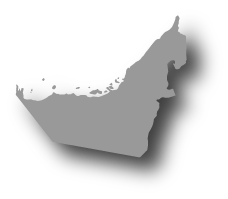Mental models for designers

Wes O'Haire
Mental models for designers
Source: Drop Box Design





Curious about product design at Dropbox? Here’s a look at tools we use for solving problems, making decisions, and communicating ideas.
A few years ago, I was getting ready to present some new designs to a few executives for review. The research was thorough. The interactions were thoughtful. The pixels were polished.
But as I started to explain our team’s design direction, things went south. People were slightly confused and weren’t sure how we were making decisions. Ultimately, they had a hard time buying in, and it was all on me.
After the review, I realized that:
· I hadn’t shown how we solved the problem
· I hadn’t created a clear decision framework
· I hadn’t crafted a narrative around our solution
Turns out, there’s a lot more to being a designer than designing.
So how can you operate outside of your core design skills? Use mental models: simple explanations of how something in the world works. Like supply and demand, which helps us understand the economy, or the Pareto Principle, which helps us understand cause and effect.
To get you started, I’ve put together a set of seven of my favorite mental models that I use daily as a designer. They’ll help you solve problems, make decisions, and communicate ideas.
Models for problem-solving
First principles
Do you need an innovative solution to a complex problem? Try approaching the problem from first principles.
To do this, take your problem and:
1. Break it down into its fundamental parts
2. Reconfigure those parts to build a solution
I did this on a project last year where we started with our problem statement. From there, I broke it down into its fundamental parts, then addressed each part, and reconfigured it to build up a solution. More on first princples here.
Inversion
Are you solving for only the best-case scenario? Try inversion to get a 360-degree view of your problem. To do this, instead of thinking of ideal solutions, think of bad solutions then ask yourself, “How might we avoid these?”
This method is great in situations when you want to approach a problem from an alternative point of view, or when you want to make sure you avoid worst-case scenarios.
We did this with our Customer Experience team, which handles all of customer support. Before the project started, we met with two of our top-tier agents, and they helped us brainstorm all the ways in which the feature could potentially go wrong for our users. They helped us round out our view of the problem, instead of locking in to an early idea. Read more examples of inversion here.
Abstraction laddering
Want to make sure you see the forest for the trees? Try abstraction laddering to get above your problem.
1. Start with your original problem statement: Design a better can opener
2. Then ask “how” questions to get to more concrete statements. How might we design a better can opener? → Make it more appealing. Paint it red and add a bow!
3. You can also ask “why” questions to get more abstract statements. Why might someone need a can opener? → To get soup out of a can
4. Now ask “how” from a higher level How might we design a better way to get soup out of a can → We could redesign the top of the can itself to be a pop top
Models for decision-making
Hard choice model
What kind of decision are you making? The hard choice model is a great way to figure this out.
Take your decision and look at:
1. How impactful the decision is
2. How easy it is to compare the options
I find that many times I think I’m making a Hard Choice, but in reality it’s a Big Choice or an Apples/Oranges Choice. This framework can help you differentiate between these types of decisions.
Confidence decides speed vs. quality
Should you be optimizing for speed or quality? This is a question we ask ourselves a lot. And it comes down to two things: your confidence that you’re solving the right problem, and your confidence in the solution you’re designing.
· Low confidence in the importance of the problem? Focus on speed.
· High confidence in the problem but low confidence in your solution? Focus equally on speed and quality.
· High confidence in the problem and the solution? Focus on quality.
More on this model from Brandon Chu here.
Models for communicating
What, so what, now what?
Are you giving quick feedback? What, so what, now what is a lightweight way to structure your feedback.
The diamond model
Are you preparing long-form content (like presentations or big docs)? The diamond model works great for putting a structure around your main idea.
1. Attention: Start with a story, statistic, or something similar
2. Main topic: Briefly introduce the main topic you’ll cover
3. Previews: Give quick previews of your subtopics
4. Subtopics: Go into depth with your subtopics
5. Summaries: Recap your subtopics
6. Conclusion: Paint an ideal vision of the future
7. Call to action: Invite your audience to act or make a decision
Try them out
These models are valuable only if they’re used. So when you’re at your desk this week and trying to solve a problem, make a decision, or communicate an idea, try one of these mental models. If you practice several of these models, you'll be well-equipped for your next big design challenge.


Qatar

Commercial bank tower, West Bay,
15th floor, Doha, Qatar
PO Box 27111
+ 974 50 239 329
QATAR@CREAPIX.NET











